It took 35 years to catch up with the pace of the European and American communications markets. It was really too "south...
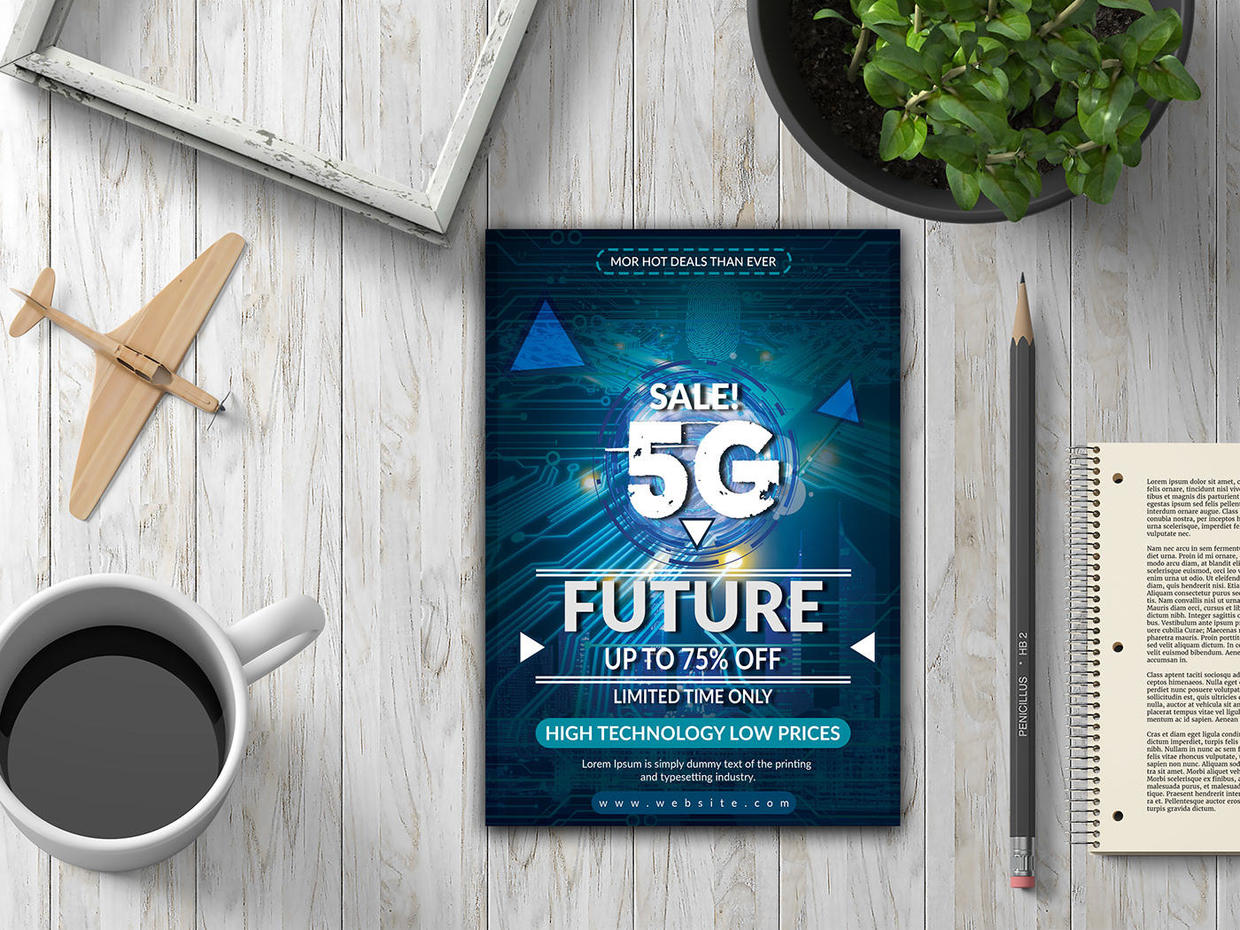
We still remember the slogan of Yinghaiwei in 1996: How far are the Chinese from the information superhighway -1500 meters to the north.
But who still remembers that as early as 1984, China's communications market was regarded as a huge cake by Sweden Ericsson; after that, Ericsson cooperated with Qinhuangdao, which led to the first mobile communication equipment system put into use in New China.
At that time, due to the interference of an unofficial organization "Paris Coordinating Committee (the predecessor of the" Wassenaar Agreement ")", the cooperation was once deadlocked; so that Ericsson could only sell the backward "cellular 450 megabytes mobile communication system" to China, but Ericsson replaced 450 megabytes of equipment with 900 megabytes when executing the contract.
This is the starting point of China's mobile communication market.
In 1987, China's first mobile phone communication system was opened in Qinhuangdao.
This year coincided with Ren Zhengfei's resignation from Nanyou and raised 21000 yuan to establish Huawei in a dilapidated factory. Since then, Huawei has always been the most beautiful silhouette of China's communications market.
Technology in the 1G era has gradually penetrated into Chinese life, but this communication technology in the entire 1G era has been controlled by the "seven countries": Lucent in the United States, Alcatel in France, Nortel in Canada, Siemens in Germany, Ericsson in Sweden, BTM in Belgium, Fujitsu in Japan and NEC.
The young generation of entrepreneurs and adventurers in the 2G era are on the stage: Ma Yun, Ma Huateng, Li Yanhong, Zhang Chaoyang, Chen Tianqiao, Wang Zhidong, Ding Lei... They are no longer obsessed with mining, building buildings and setting up factories, and they begin to pioneer on the Internet.
The emergence of smart phones in the 3G era, while achieving the iPhone myth, also allows people to see the power of made in China; in the context of the global financial crisis, the 3G standard "TD-SCDMA" formulated by the Chinese themselves came into being.
In the 4G era, when Apple and Samsung joined forces to push Nokia down the abyss, from China Cool Alliance to Huami OV, batch after batch of Chinese enterprises came to launch an all-round assault on it in terms of price, photography, music, modeling, etc. The latter even gained a firm foothold between Apple's weak performance and Samsung's collapse, and even achieved anti-overtaking.
From the initial starting point of 900 trillion, we have experienced 1G usage doctrine, 2G plagiarism, 3G self-forming pole to 4G competition on the same stage. It seems that every era is developing healthily, but only a few of them can always stand on the cusp of the storm. What have those left behind Internet companies encountered?
Not to mention that our "science and technology tree" was locked up before 1984, we who did not master the core technology could only be slaughtered.
When the first and second generation of Internet entrepreneurs are angry, they are not only facing a wild market, they also need to face the honey and belly swords of Europe, America, Japan and South Korea.
There are not only the patent encirclement and suppression of Panasonic, Hitachi and Sony in 2004, but also the northern district court of the United States. When Samsung released the world's first 8GB micro-hard disk mobile phone in 2006, the only micro-hard disk project in China at that time disintegrated; there are also the United States labeled Chinese nuclear physicist Li Wenhe as a "Chinese spy" in 1999, the arrest of three Chinese who wanted to set up a high-tech enterprise in China in 2001, and the giant Cisco in 2002 used "intellectual property rights" as a starting point to completely encircle and suppress Huawei, a new enterprise......
We should know that as early as 1984, during the Cold War between the United States and the Soviet Union, China's communications market was already shrouded in the shadow of the "Batumi" of the United States, and after the disintegration of the Soviet Union, the United States began to be busy checking and balancing the European Union and Japan. In 2001, Europe and the United States thought that they could tame China to become their cheap labor market, forcing us to "join the WTO"; fortunately, after going through many detours, we have become one of the beneficiaries in the process of globalization. Now, the United States, which is vaguely and wantonly provokes trade frictions around the world, stands at two extremes.
If it were not for Alstom's American trap, we would not have known that American law was greater than international law.
If ZTE had not been sanctioned, we would still be living in a utopia of usage.
After that, the United States took the initiative to launch a protracted "Sino-US trade war"; but when Huawei joined hands with 5G to shine its sword, the entire battlefield seemed to suddenly change the wind.
In February 2019, China released the first 5G mobile phone Mate X. On July 26, the first dual-mode 5G mobile phone Mate20 X(5G) was released, supporting both SA and NSA. The first flagship 5G chip Kirin 990 was released on September 6. On September 19, the first built-in full-standard 5G baseband chip Kirin 990 Mate 30 series was released.
Perhaps Mate X is not the first generation of 5G mobile phones, but there is no doubt that Huawei has accelerated the pace of the 5G era.
In November 2018, the United States was the first to issue the first batch of 5G licenses. A month later, AT&T announced that 5G was officially commercially available.
In April 2019, South Korea became the first country in the world to popularize 5G; subsequently, operators in the United Kingdom, Switzerland and other countries have also launched 5G services.
In June 2019, the Ministry of Industry and Information Technology officially issued 5G licenses to China Mobile, China Unicom, China Telecom and China Radio and Television, officially opening the first year of 5G.
Under the night, is the whole era of 5G fanaticism:
According to the "August 5G Ecosystem Report 2019" released by GSA Global Mobile Equipment Suppliers Association, in the first year of 5G, 56 operators in 32 countries announced the deployment of 5G technology and 41 suppliers announced the launch or upcoming 5G terminal equipment.
In contrast, only 4 mobile operators and 3 OEM manufacturers launched networks and terminals in the world in the first year of 4G.
Under the green light of the policy, governments have also invested heavily in 5G:
Lei Feng Network reported that the South Korean government plans to invest 650 billion won in 5G next year, up 86% from this year. The United States has also proposed policies to stimulate 5G investment. The US wireless communication industry expects to invest up to US $275 billion in 5G networks in the future. GSMA predicts that by 2025, China alone will invest US $184 billion in 5G.
(1)
5G Basic Athletics
○

However, since Huawei's 5G mobile phone Mate X was unveiled, various topics about 5G hype, 5G precocious and 5G uselessness have been heard. What's more, where 5G can be blacked out are blacked out.
You should know that the press conference and the concept machine were originally the two Poseidon needles in the technology market, but in recent years, the press conference has been spoilt and the concept machine has given up various treatments, which makes consumers a little confused.
5G is such a less mature concept.
However, in the 2018 mobile phone industry, when high-end machines are reduced to high-end goods and various self-lowering positions, 5G may be a good Garden of Eden.
Although 5G is still "raw rice", it is not impossible to become "cooked rice" under the "full cooperation" of major communication manufacturers. After all, rice has already been put into the pot.
In the 5G mobile phone, our scientific and technological background is not as poor as imagined.
We have made varying degrees of progress in the transition to 5G terminal, base station and network architecture.
Just like the 5G terminal closest to the user, we are already remarkable in the three modules that have changed the most: baseband, RF front-end chip and antenna.
1.5G baseband
The main function of the baseband chip is to synthesize and analyze signals such as voice and data, and baseband signals, including CPU processors, channel encoders, digital signal processors, modems and interface modules.
In terms of hardware technology, only three countries have released 5G baseband chips:
There are three in China, two in the mainland, Huawei's Barron 5000 and Ziguang's Spring Vine 510. One is in Taiwan, the M70 5G of MediaTek, but it has not yet been adopted by mobile phone manufacturers.
There are also two in the United States, Qualcomm's X50 and its upgraded version X55 and Intel, whose 5G baseband business was bought by Apple for US $1 billion.
There is one in South Korea, Samsung's Exynos Modem 5100.
2.5G RF
The main function of the RF front-end chip is to realize signal transmission and reception. To connect wirelessly, it must have a RF front-end chip; it includes a variety of chip modules such as RF switches, RF low noise amplifiers, RF power amplifiers, duplexers, and RF filters.
At present, the RF front-end chip market is completely dominated by foreign countries, with the United States, Japan, Germany and the Netherlands accounting for 95% of the market. Among them, the United States has Broadcom, skyworks and Qorvo. Japan, Germany and the Netherlands each have one.
Although there are also Zhuo Shengwei, Weir and Ridico, National Feixiang, and Vigor, their market share is very low.
3.5G antenna
The main function of mobile phone antenna is to receive and transmit various signals.
In this market, Xinwei Communications already has the level of supplying Qualcomm and Lixun Precision to Apple.
The technology of 5G mobile phone terminal is relatively backward, but we are unique in the openness of 5G base stations and 5G market.
You know, in the 4G era, there are about 5 million base stations in the world, 3.4 million of which are in China.
However, since 5G wavelength is shorter than 4G, in order to achieve good signal effect, the newly-built 5G macro base station will at least double that of 4G base stations. This determines that there will be 10 million 5G macro base stations in the world, nearly 7 million in China, and only more micro base stations.
Huawei and ZTE happen to be the "number one players" in the field of macro base stations and micro base stations ":
Huawei has been the first in the field of Acer Station for four consecutive years, with a global market share of 30%. It also won the market 34.4% in the global demand for 5G base station antennas in 700 billion. In the global 5G standard necessary patent technology reserve, it ranked first with 1970 declared patents, accounting for 17% of the total patents.
Although ZTE is not as dazzling as Huawei, it has also won the 9.4% market in the field of Acer Station and is making efforts to 5nm process 5G chips.
In addition to mobile phone terminals and base stations, the "5G network architecture" is naturally required to be further upgraded, which includes optical modules, optical fiber cables, and operation and maintenance providers.
Optical fiber and cable is a "precocious" industry, which is nothing to compete.
Operators are also often close to the water.
The main function of the optical module is to complete the interaction between electrical signals and optical signals. Its main player is the United States. However, as Avago, Finisar, Lumentum, Oclaro and others have successively sold the optical module business to Chinese companies, the market share of domestic optical module manufacturers has increased considerably, but it is mainly concentrated in the low-end market.
In the field of optical devices with integrated optical modules, China is close to Japan, with only about 14% of the market, far behind the United States.
As for the optical chip, the main players are the United States and Japan, which are 1-2 generations behind them in China. Although Huawei Haisi also designs optical chips, and at present, only Haisi can design high-end optical chips with more than 25G for 5G base stations in China, Haisi obviously cannot satisfy the appetite of 5G optical modules in China.
Found no, from 5G patents, 5G mobile phones, 5G base stations to 5G network architecture, although not all-encompassing, Huawei has basically done its best in the fields it can. Even if there are disputes in the global field, it is not too much to say that it has pushed China to the forefront of 5G technology with "its own efforts.
However, this also brings a strange appearance: China has Huawei's heavy attack at the high end of the 5G market and the cost-effective factor at the low end, but few enterprises in the middle waist can keep pace with Huawei.
②
"tragic" Huawei
○
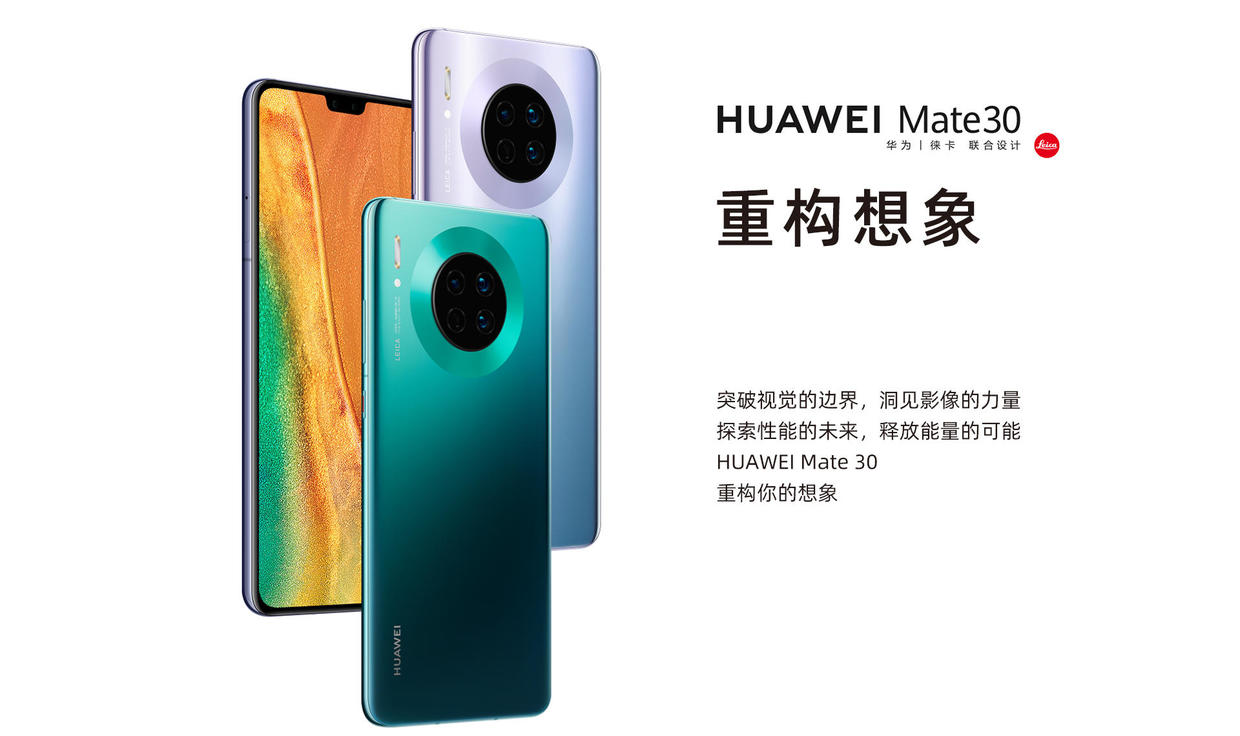
Above, we can find that in 5G, our hardware accumulation is not as weak as imagined, and with the emergence of distributed operating system Hongmeng OS and Google System Android 10, which natively supports 5G; We have completed the puzzle with the largest 5G ecology.
As the first "virgin land" of 5G ecology, 5G mobile phones are suspected of "feeding" the immature 5G ecology by "using" a large group of mobile phone users, but 4G mobile phones have seen that the ceiling needs further "user experience" to save this is also a fact.
Therefore, to some extent, "5G mobile phone" is a match made in heaven.
However, this trend is neither led by "son" Apple nor "illegitimate" Samsung, which is Huawei's original sin.
In April 2019, Trump described the "5G American Dream" for the first time in the Roosevelt Hall of the White House. He mentioned that this was "a game that the United States must win and will win"; therefore, it opened the United States. The prelude to the suppression of Huawei.
In May 2019, the United States declared a "state of emergency", with a list of entities, an ARM chip supply cut-off, Google suspending some of its business, and IEEE banning Huawei employees from participating in an all-round encirclement and suppression of Huawei.
After that, the United States also asked other countries to put pressure on Huawei: Australia and New Zealand immediately expressed their loyalty and immediately banned Huawei; seven important allies, including Britain, Canada, France and Germany, said they were seriously considering the proposal; only Italy, Spain and Denmark chose not to consider banning Huawei.
But no matter how "flustered" the United States is, Huawei's rhythm is not chaotic.
Huawei released the Mate 30 series as scheduled, with side screen control and air gestures making people shine at the moment. And it dares to gamble on 5G and AI and compete head-on with Apple A13.
However, in the battlefield of AI chips, Huawei needs to face not only old rivals such as Apple, Samsung and Qualcomm, but also new forces such as Google, Microsoft, Amazon, IBM, Intel and Avida.
It can be said that Huawei has chosen another hard bone.
The opening of China's 5G market environment is naturally good for Huawei, but the international market is bound by the "US 5G", Huawei is bound to get twice the result with half the effort, which will greatly drag down Huawei's internationalization strategy.
Of course, because the United States has always been distrustful of Chinese Internet companies, Huawei has almost no market in the United States, and there is almost no difference. However, the United States has asked Google to suspend GMS service, which is rather difficult, thus there is a foreign media evaluation of Mate 30 Pro: "Lost Google, failed to become the best mobile phone".
Why is GMS so important?
Because foreign users' search, email, map, YouTube, Android Market and other services all involve GMS, it can be described as air, can not pay attention to, but can not be without; So this time Google won't let Huawei use GMS, is not afraid.
Although Huawei has provided a complete set of "spare tire" service HMS and integrated 45000 APP for this purpose, users' habits are not so easy to change.
This is also the fundamental reason why Yu Chengdong promised that "if the ban is lifted, Google services and applications will be re-added to Mate 30/Pro.
Being bullied but not fighting back is not Huawei's style, so there is the latest trend of Huawei switching to computing platforms and releasing 112 cloud services and car networking in one go.
Huawei has grown into a behemoth, and a ban is too taken for granted.
Returning to the Mate 30 series and Huawei itself, Huawei's advantages are obvious, but its disadvantages are also obvious.
Mate has changed too much compared with Apple X, xs and 11pro except for a little change behind almost one face. From double photography, three photography to four photography, it always subverts itself and changes its shape beyond recognition. This can certainly give people a "freshness", but after the freshness? It is inevitable that there will be some emptiness. In case, users like a certain feature of the previous generation very much. Once one of these shapes is not very popular with users, for example, Mate 30 is controversial in the round four shots of many light bulbs and flashlights. Even if it is still better than Apple's gas stove, it is not much better.
However, Huawei itself has its shortcomings in publicity: it has been emphasizing how capable it is, how good its indicators are, but it has less "human touch" and a little more "tool sense" of dazzling skills ".
In addition, Huawei's stall is too big, and it will inevitably lead to more "scolding"; it can cater to some people, but it can't cater to everyone, just like Hongmeng and Ark cater to non-technical personnel but lose their reputation with developers.
As for the black powder, even Google's "quantum hegemony" can be forcibly bound with Huawei. There is really no need to pay too much attention. Their circle is limited and their energy is limited. Most of the real pollen is silent.
(3)
"Dangerous" Apple
○
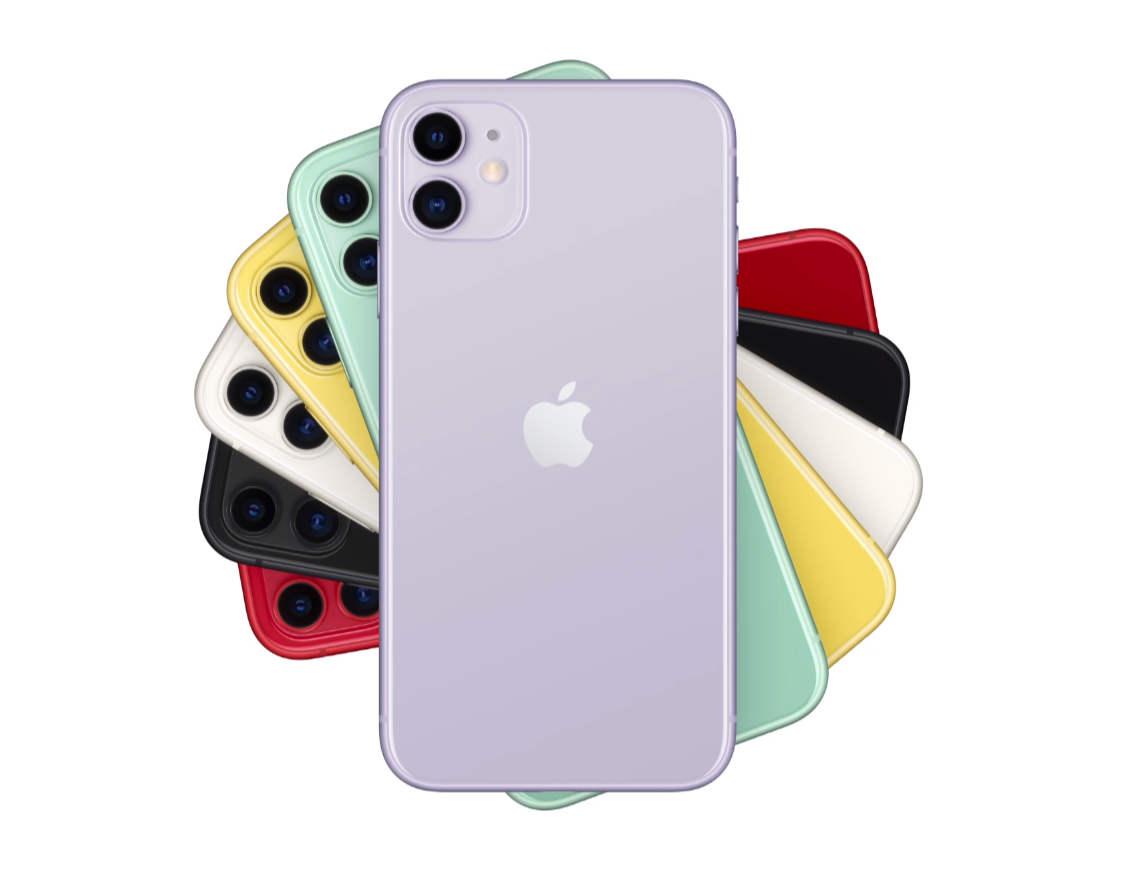
No matter how sacred the apple's status is in the eyes of fruit powder, it "fell off the altar" is a fact.
According to a new annual survey of Chinese consumer attitudes, Apple's brand reputation fell to 24th this year from 11th a year ago, while before 2017, Apple's brand reputation was ranked 5th. At the same time, Huawei, Apple's biggest competitor, rose two places this year to second place.
What makes people sad is:
Huawei has been targeted by the US market too hard because of its push for 5G.
However, Apple has upset Chinese users because it has suspended 5G and is not innovative enough.
Regarding Apple's "lack of innovation" once lagging behind Android in double photography, three photography, four photography, super night scene, super fast charging, true full screen, etc., we need not overexplain.
We 'd better not be too optimistic about the fact that the world's first 3G mobile phone is Panasonic and the first 4G mobile phone is HTC, but Apple still comes from behind to become the most popular smartphone.
The essence of innovation I understand is the spillover of organizational competitiveness, but it is clear that in recent years, the lawsuits with Qualcomm, the wave of executive departures, Titan layoffs, Apple's soft, made in the United States and $14.4 billion sky-high fines have occupied Apple too much of its organizational ability to innovate.
Cook's definition of innovation is "innovation is not necessarily a change, but to do better", which is far from the subversion of 1984 in the Jobs era and the difference in the Different of Think; this determines that Apple's innovation in the Cook era is more prudent and slower.
However, handing in a white roll in the first year of 5G does not explain the phrase "5G is a little ahead of schedule:
You should know which of the original Retina retina screen, stainless steel frame antenna, apple map, Siri, fingerprint identification and structured light was mature enough when it went online. Even the recently launched Wi-Fi 6 has to use a dedicated router to "rub it"?
And these have more or less made apples.
So what is the root of the iPhone 11 not supporting 5G?
First, the recession trend of the U.S. telecommunications industry is obvious. In the 5G era, there is no telecommunications equipment supplier in the United States that can compete with Nokia, Ericsson and Huawei. So far, no American company has been able to manufacture the equipment needed to build a new generation of wireless networks.
Second, the low-frequency resources of the United States are occupied by military industry or other fields. The remaining high-frequency resources, millimeter waves, have obvious defects in continuous transmission, which not only cover a small area, but also are easily interfered and disconnected.
Of course, some people say that Apple chose the wrong supplier and missed 5G because it failed to get the parts on time. This also has certain reference value.
This time the iPhone 11 is obviously facing the U.S. market. It is inappropriate to launch 5G phones. Wi-Fi 6, which is used to supplement 5G, has become the best choice.
Therefore, Apple's shift to 5G in 2020 is also a bit suspended, but this does not prevent Apple from producing a concept experience version.
Returning to the iPhone 11, the upgrades in signal, endurance and fever are certainly surprising, but it is a bit of a mountain out of a molehill to tout them as bright spots. After all, it is the duty of a mobile phone to do a good job in signal, endurance and fever.
On this side, the iPhone 11 Pro Max screen has just received an A + rating, while on the other side, the iPhone11 has shocked all kinds of problems, such as poor signal, high maintenance cost, hand warmers......
There is even an argument that all 5G phones before the iPhone 12 came out were mice, which is not intentionally blocking the iPhone 12!
Back to the apple itself.
Apple's advertising texture has always been a kind of "cultural context" created by Huawei, which is very difficult to achieve overnight.
Moreover, according to Apple's current development strategy, Apple may pay less and less attention to hardware after gaining a firm foothold in the content field. After all, ecological barriers are established based on hardware, and then "happy taxes" are collected among the barriers. Such an elegant way of making money with "zero investment, small scale and multi-frequency" is more in line with the interests of Apple shareholders. On the other hand, it can also generate strong user "stickiness".
Therefore, for Apple, before there is no major breakthrough in basic science (battery life, storage unit, chip manufacturing process, quantum computing, etc.), it only needs to ensure that its product sequence is in the first echelon. As long as the hardware does not achieve "anger and resentment", its ecology can encircle a large wave of powder, and it is not a problem to surpass its current volume for a year and a half; moreover, as the technology industry that takes away the 60% profits of the entire mobile phone industry in the world, the money is busy enough to buy new technologies, open up new markets and even give back fruit powder.
④
"Lucky" Samsung
○
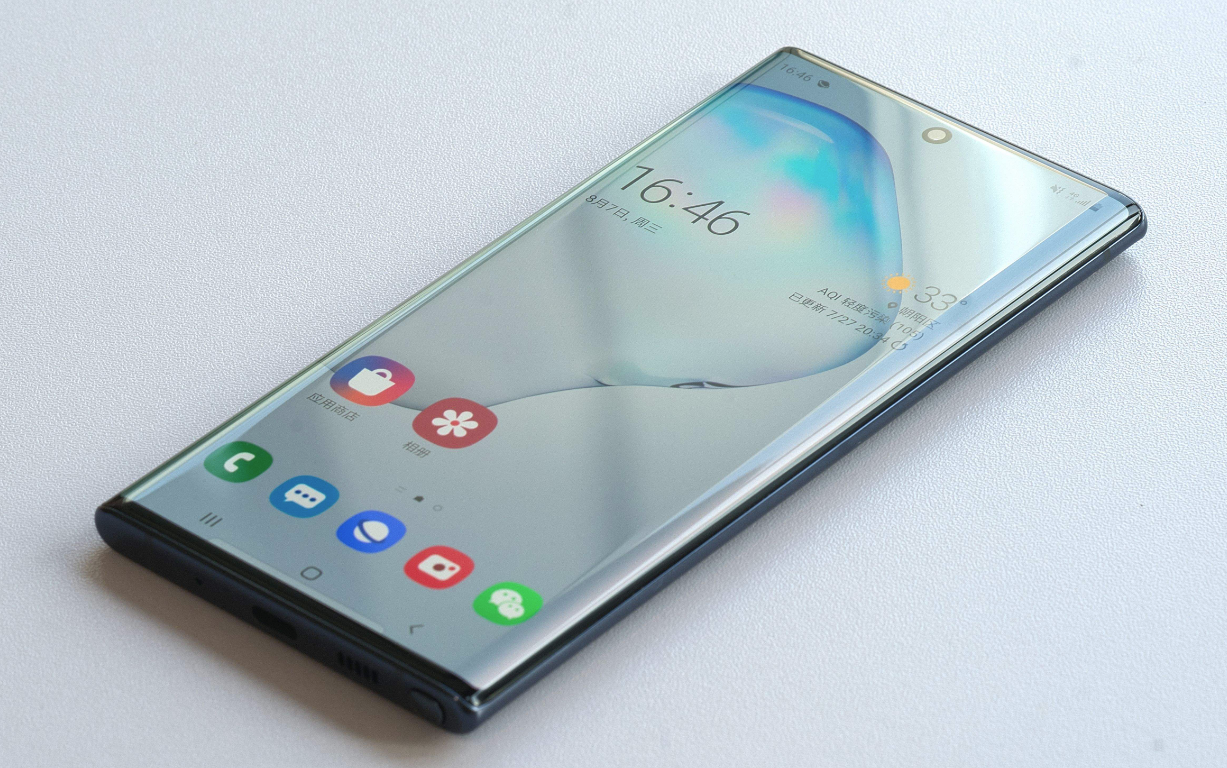
For Samsung, let's make a long story short.
In 2013, Samsung once occupied 35.5% of China's mobile phone market.
In 2014, Samsung's mobile phone shipments ranked among the top three in China.
However, with the decline of word-of-mouth and sales volume, more and more agents have gone to Huamiov camp.
Strategy Analytics reported that Samsung's market share in China fell below 1% in 2017 due to its inability to keep up with local Chinese brands and Apple.
At the end of 2018, Samsung closed its Tianjin factory.
In early August 2019, Samsung's mobile phone shipments in China in the second quarter were exposed. According to the latest data from the research company Strategy Analytics, Samsung's mobile phone shipments in China in the second quarter were only 700,000, with a market share of only 0.7%.
In September 2019, Huizhou Samsung, Samsung's last mobile phone factory in China, will also close at the end of the month, which means that Samsung will not be produced in China in the future.
As Samsung's last fight, 5G phones are given high hopes.
On August 21, Samsung Note 10 series was officially released. As a Xiaolong 855 mobile phone, the price of Samsung Note 10 is 6599.
On September 23, Samsung said that the company's first folding phone Galaxy Fold will be launched in the US market on September 27. The phone was originally scheduled to be launched on April 26 for $2000, but it was delayed due to its vulnerability to damage.
However, the Note 10 series did not have many voices, and the re-launched Galaxy Fold is still equally fragile.
However, the failure in the Chinese market did not affect Samsung's foreign markets, and while Huawei was "banned" in Europe and North America, Samsung re-established a substantial lead in Europe in the second quarter; and it dominated the entire Southeast Asian market. Take the lead.
Huawei has been "shut out" by various kinds, and the 5G market in Europe and the United States has obviously become Samsung's "forbidden". However, under the unbridled interference of European and American governments in the construction of 5G, the subjective public opinion of 5G in the market will not be too healthy, coupled with Apple's intentional or unintentional guidance. Even in the "vacuum zone" of Huawei's mobile phone, the time left for Samsung is really limited.
However, Samsung's 5G policy dividend based on South Korea is likely to be enlarged in the European and North American markets. In addition, the South Korean communications market itself has a good foundation, and it is also likely to become Huawei's opponent in the 5G field.
Therefore, there is no need to rush into bad news.
⑤
How effective are other 5G phones?
○
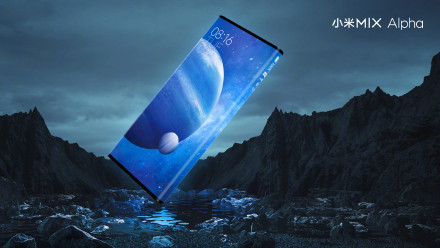
There is really nothing to say about other 5G mobile phones.
MOV is on line step by step, and Jinli, Kupai and HTC are also expected to turn over by 5G.
Even Ericsson seems to have found its meaning in the 5G era.
Although the arrival of 5G will indeed reshuffle the current mobile phone market, it is somewhat slow that Jinli, Coolpad and HTC have only started to invest heavily in the research and development of 5G smart phones and related services. Moreover, just like the 1000-yuan low-end products used by Jinli and Coolpad to revive, there are not many bright spots, which is difficult to survive under the hegemony of Huami OV Apple.
More importantly, it is an era of technology patent competition that implements communication logic and underlying chips. It is really difficult for them to break the siege without mastering the core technology.
At this time, their best choice is not to develop "1000 yuan machine" to face the competition of Huami OV, but to switch to hardware or software as soon as possible based on the general trend of 5G era, to provide components or 5G ecological applications for Huami OV. Who said that the next WeChat and trembles cannot appear in 5G era?
As for Huami OV, which is the main force of 5G, OV has not seen much new ideas for the time being, but Xiaomi drew a bottom line yesterday and opened a "brain hole": Xiaomi 9 Pro from 3699 yuan (supporting trade-in, with a minimum of more than 1600) and Xiaomi MIX Alpha surround screen concept mobile phone from 19999 yuan, which is expected to be listed by the end of December.
Although some people say that Xiaomi MIX Alpha is a "PPT" mobile phone, it is not very practical. But as Lei Jun said: "Do not consider mass production at any cost, do subversive products".
If we agree with Cook's definition of innovation, we have no reason to question Lei Jun's setting of "concept machine.
Because it is more like Xiaomi Group's centralized training of mobile phone technology, the surround screen after the full screen is Xiaomi's exploration of the future mobile phone form.
Who said that the future 5G mobile phone will only have two forms: tablet and folding?
Even if this kind of surround screen is "wasteful" on mobile phones, is it of no practical value on watches, home televisions and giant screen cinemas?
⑥
Do you want to buy 5G mobile phones?
○
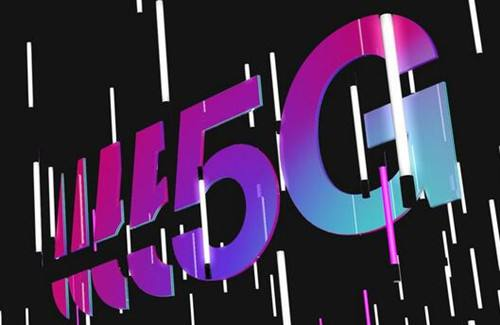
Whether 5G is ahead of time, this will be open.
However, there are several points that must be mentioned as to whether major manufacturers should invest 5G as early as possible:
First: The popularization of 5G network, especially in the Chinese market, is far faster than we expected;
Second: to lay out 5G mobile phones first, which will not become a disadvantage for an Internet company;
Third: According to past experience, following up the 5G system first cannot always maintain the leading edge.
Of course, this is the impact of 5G on Internet enterprises.
As an individual, do you need to follow up the purchase of 5G mobile phones in time?
We are not sure how indispensable 5G mobile phones are for ordinary consumers. At this stage, there is almost no other feeling except for faster network speed and a feast of traffic. However, in the current environment where "consumerism" is rampant, 5G mobile phones are "more advanced" than 4G mobile phones, which is the "consensus" of most people ".
To some extent, the current mobile phone has stripped off its folding screen and 5G coat, which is more like an increasingly expensive "camera bracket". Originally, one camera is enough, but now it takes double, three and four cameras at every turn. Isn't it just a selfie? What's the matter with the moon?
No matter how many cameras, no matter how complicated filters are, no matter how advanced AI is, will this person really become beautiful?
Therefore, the biggest explicit significance of 5G at present is to become the new standard for high-end machines.
But in the era of consumerism, the word "high-end" is the irrational "illusion" pursued by the whole society ".
After all, the current high-end machines are almost tired of playing with full screens and cameras. Chips are not very "dominant" things, and the biggest profit margin of mobile phones is enriched in "high-end machines". This is destined to be 5G a "high ground" for major communication manufacturers to compete for for a long time. Above this high ground are some geek players who are very sensitive to "hardware premium, they are" trendsetters "in the field of science and technology, and they are also a small group of people who are relatively easy to influence public opinion.
However, the silent majority will not take scientific and technological innovation as the first choice, but mixed with a large number of social factors; although online public opinion can influence this part of the user's choice, online public opinion cannot represent the real purchase intention.
Therefore, 5G mobile phones will only affect technological innovators (technology geeks), irrational consumers (early adopters) and some rational consumers (more concerned about cost performance); as the first batch of "immigrants" in the 5G pioneering era, they must be able to endure loneliness while enjoying the onlookers of the whole people.
As for the power consumption of 5G mobile phones, it may bring experience retrogression and other problems, which can be made up for under the upcoming fast charging and "technology patch.
However, it is not necessarily necessary to say that 5G can subvert the mobile phone experience.
It is indeed possible for 5G to find a more subversive universal carrier in the era of the Internet of Everything, but the "meaning" of the existence of mobile phones determines its limitations.

When Jobs added photos, games and other functions to the phone call in 2007 to redefine smartphones with iPhone, who could see more possibilities for 3G.
And this time we are not standing in the "functional era" of smart machines and looking at 5G on the other side of the world?
As for now, what we need most is not a terminal defined by 5G, but a carrier that can deconstruct 5G.
PS: Some materials come from @ 36Kr @ Zhihu @ Lei Feng Network @ Titanium Media @ Observer
The head map comes from the Behance author @ Dream Brand

New user?Create an account
Log In Reset your password.
Account existed?Log In
Read and agree to the User Agreement Terms of Use.

Please enter your email to reset your password
I class = "expression-icon expression-type24" title = "Rose">